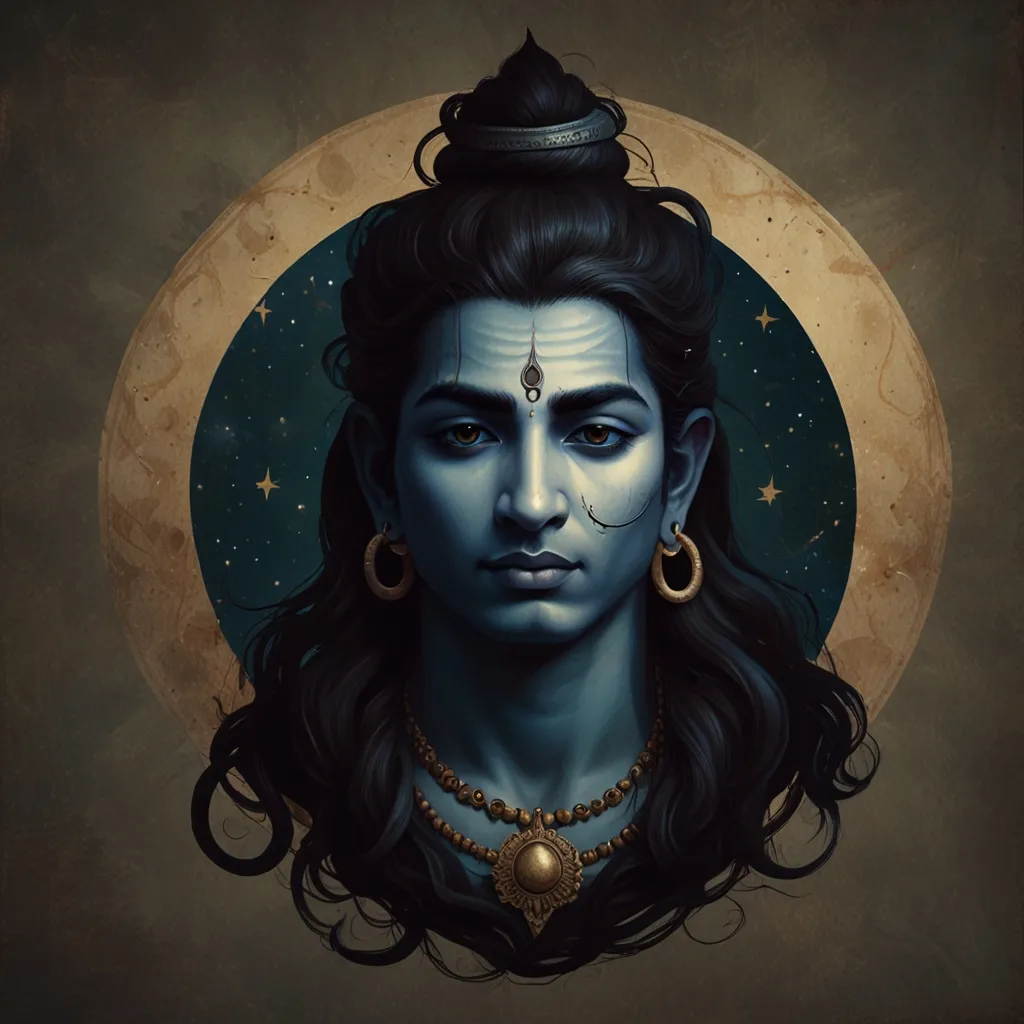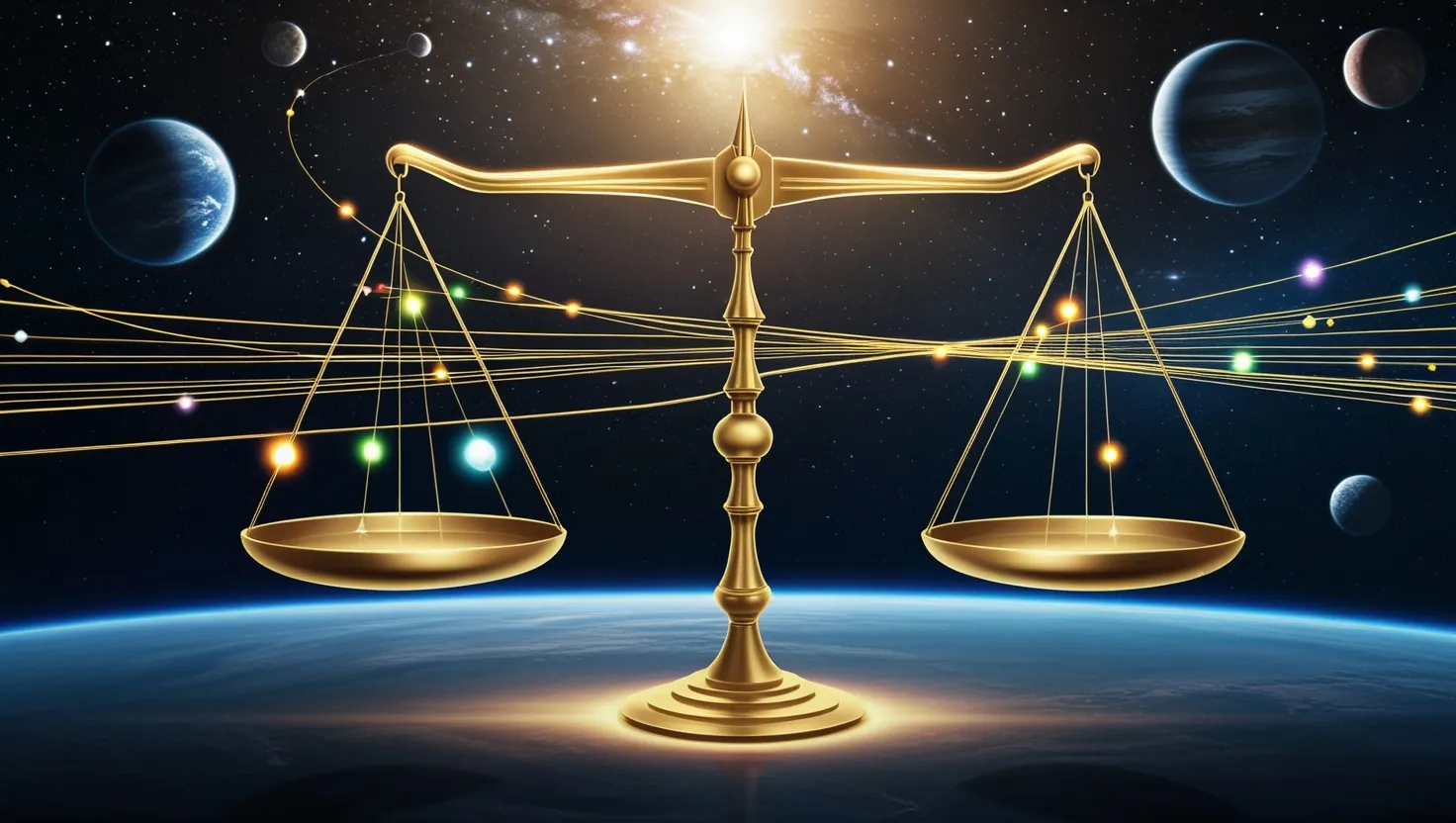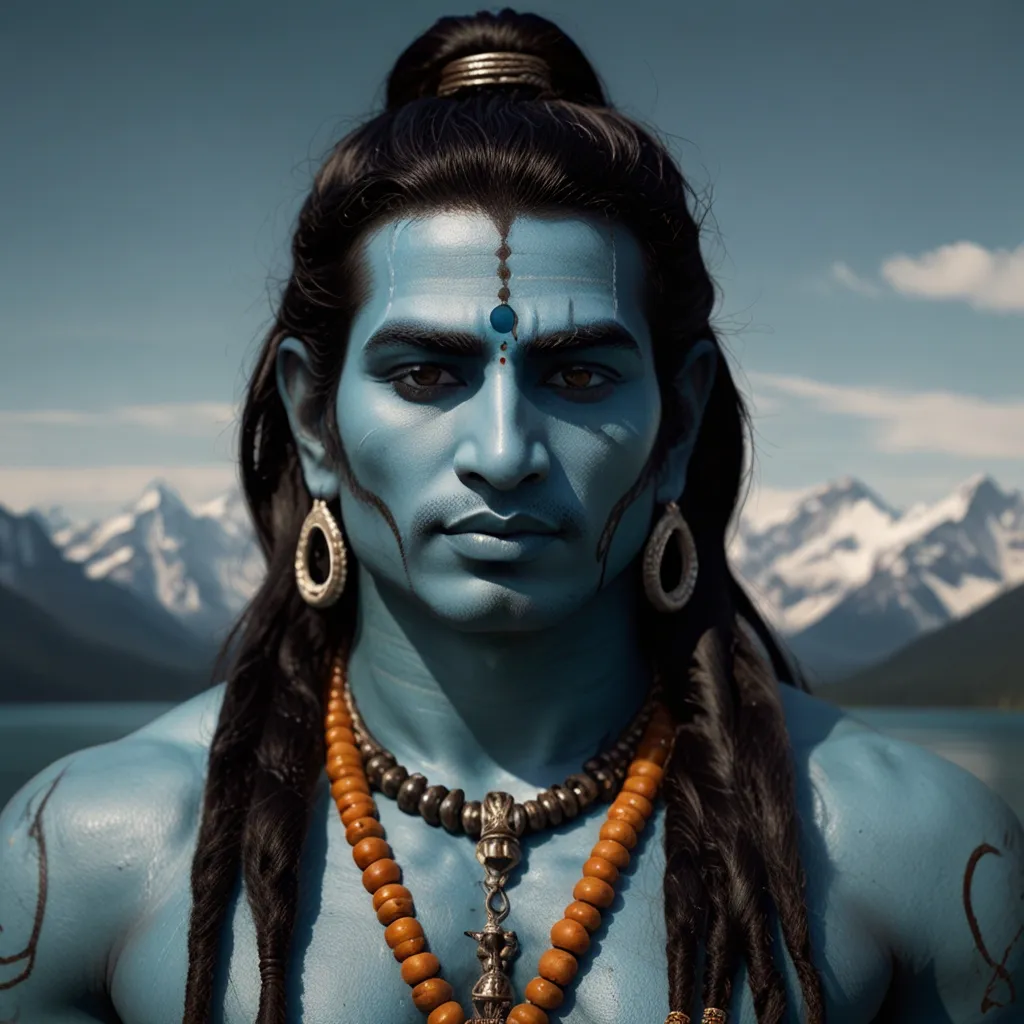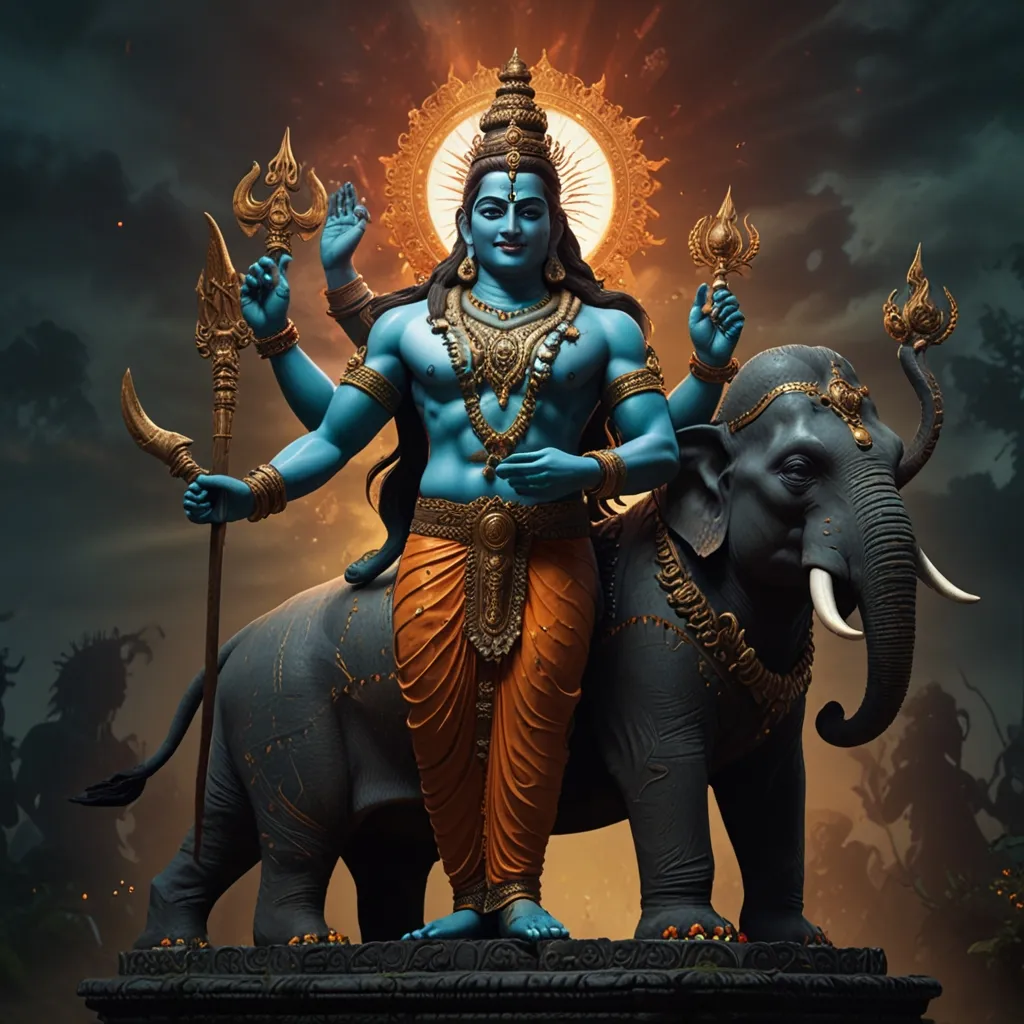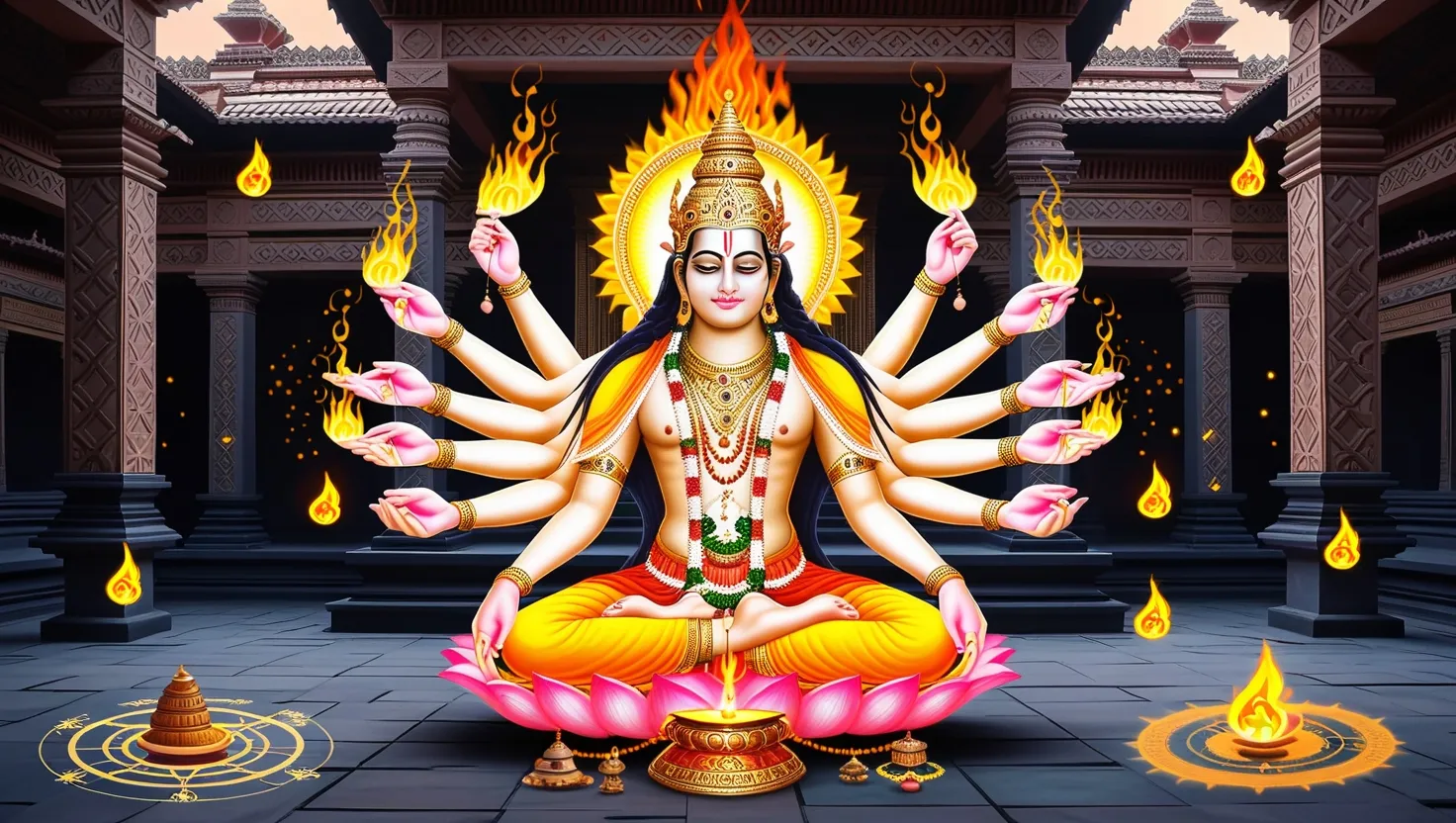In the rich tapestry of Hindu mythology, there are countless stories that intertwine the realms of the divine and the mortal. One captivating tale is that of Shiva and the curse of the Moon God, Chandra. This story isn’t just about gods and curses; it’s a saga of love, fate, and the wisdom of the gods, offering deeper insights into the human condition and the cosmic order.
Chandra, the Moon God, was a celestial being known for his stunning beauty and power. His light graced the night sky, bringing calmness and tranquility to the world. Chandra had the unique honor of being married to the twenty-seven daughters of Daksha, a revered sage and son of Brahma. These daughters, known as Nakshatras or lunar stars, each represented a different constellation in the sky.
Now, Daksha, in his wisdom, had requested Chandra to treat all his daughters with equal affection and care. But, as fate would have it, Chandra couldn’t help but favor Rohini, his fourth wife. His favoritism led to him spending most of his time with her, while the other twenty-six wives felt neglected and unloved. This neglect didn’t sit well with them, prompting them to complain to their father, Daksha.
Furious over Chandra’s partiality, Daksha decided to curse him. With an angry decree, he proclaimed, “May your powers decline with each passing day.” Chandra, recognizing the gravity of his error, pleaded with Daksha to retract the curse. But in the realm of the divine, a curse once spoken cannot be taken back. Even though Daksha felt remorse for his son-in-law, he was bound by the cosmos’s rules and couldn’t reverse the curse.
Desperate for a solution, Chandra turned to Lord Shiva, the deity known as both the destroyer and protector. Chandra made his way to the sacred grounds of Prabhas Patan, where he established a linga and prayed fervently to invoke Shiva’s grace. Shiva, moved by Chandra’s pure devotion, appeared before him. While Shiva couldn’t completely undo Daksha’s curse, he could mitigate its effects.
Shiva told Chandra, “You will wax and wane. For fifteen days, you will grow brighter and for the next fifteen days, you will wane. On full moon days, you will illuminate the world with your radiance, and on new moon days, you will disappear.” While this wasn’t the perfect resolution Chandra had hoped for, it did offer some solace. Chandra’s crescent shape served as a constant reminder of his diminished strength but also became a symbol of his everlasting presence.
Embracing his endless wisdom, Shiva decided to wear the crescent moon on his head. This act not only alleviated Chandra’s curse but also illustrated Shiva’s transcendence over time. The moon, with its phases of waxing and waning, symbolizes the cyclical nature of existence. By wearing the moon, Shiva signifies his dominance over the cycles of birth, death, decay, and renewal.
The moon holds deep symbolism in Hindu philosophy, often associated with the mind and its ever-changing state. By adorning the moon, Shiva showcases his mastery over the mind, emphasizing that true wisdom and inner peace involve controlling one’s thoughts and emotions.
Additionally, the moon on Shiva’s head embodies cosmic balance and harmony. Shiva, as the cosmic dancer, performs the dance of creation and destruction, maintaining the universe’s delicate balance. The moon, which influences earthly tides and rhythms, is a symbol of this balance.
A popular legend that explains why Shiva wears the moon on his head is the tale of Samudra Manthan, the churning of the ocean. During this monumental event, many treasures and elixirs emerged, including the moon. Recognizing Shiva’s unparalleled strength and wisdom, the gods bestowed the moon upon him, knowing he was the only one capable of bearing such a potent celestial force without suffering its effects.
The story of Chandra and Shiva beautifully encapsulates the themes of love and fate. It serves as a poignant reminder that even divine beings aren’t exempt from the repercussions of their actions. Yet, it’s also a story imbued with hope and redemption, illustrating that no matter how daunting our darkest moments may be, there’s always a path forward.
Furthermore, the crescent moon on Shiva’s head isn’t just an artistic embellishment; it’s a rich symbol with deep mythological significance. It illustrates Shiva’s command over cosmic time, mind, and balance. Through legends like the Samudra Manthan and Chandra’s curse, we gain a deeper understanding of Shiva’s divine essence.
In a broader sense, the moon’s cycle embodies the continuous processes of creation, preservation, and destruction. Shiva’s adornment with the moon highlights his role within the cosmic cycle—he is the creator, sustainer, and destroyer, managing the universe’s rhythm.
Moreover, the moon’s cool, calming presence contrasts sharply with Shiva’s fiery, intense nature as the destroyer. This stark duality symbolizes that true power lies in maintaining one’s inner peace amidst chaos. The moon epitomizes Shiva’s balanced nature, fierce yet serene.
The narrative of Chandra and Shiva isn’t merely a myth; it’s a profound lesson interwoven with symbolism and wisdom. The moon on Shiva’s head magnifies our understanding of his divine persona and emphasizes the cyclic and balanced essence of the universe. Through these celestial tales, we also learn about managing our own lives, understanding that balance and serenity are key in navigating both chaos and calm.
In essence, the story of Shiva and Chandra not only enriches the iconography of Shiva but also offers timeless wisdom on the cosmic and spiritual journey that every individual undertakes. From contemplating the mind’s fickle nature to understanding the ebb and flow of life’s cycles, this mythological narrative provides us with a deeper perspective on existence and the divine.
